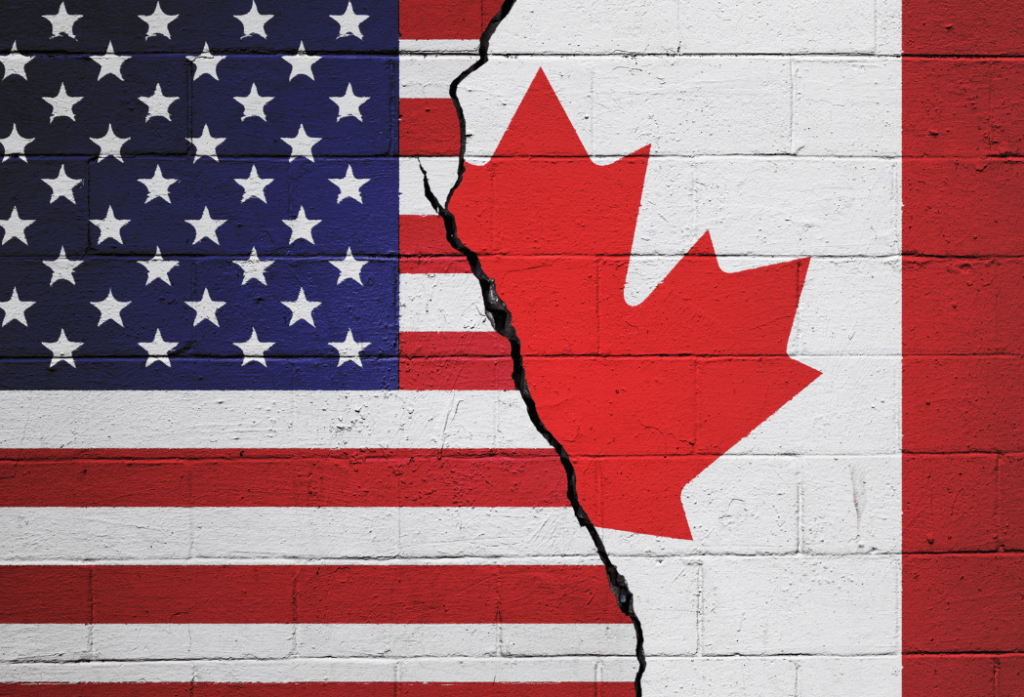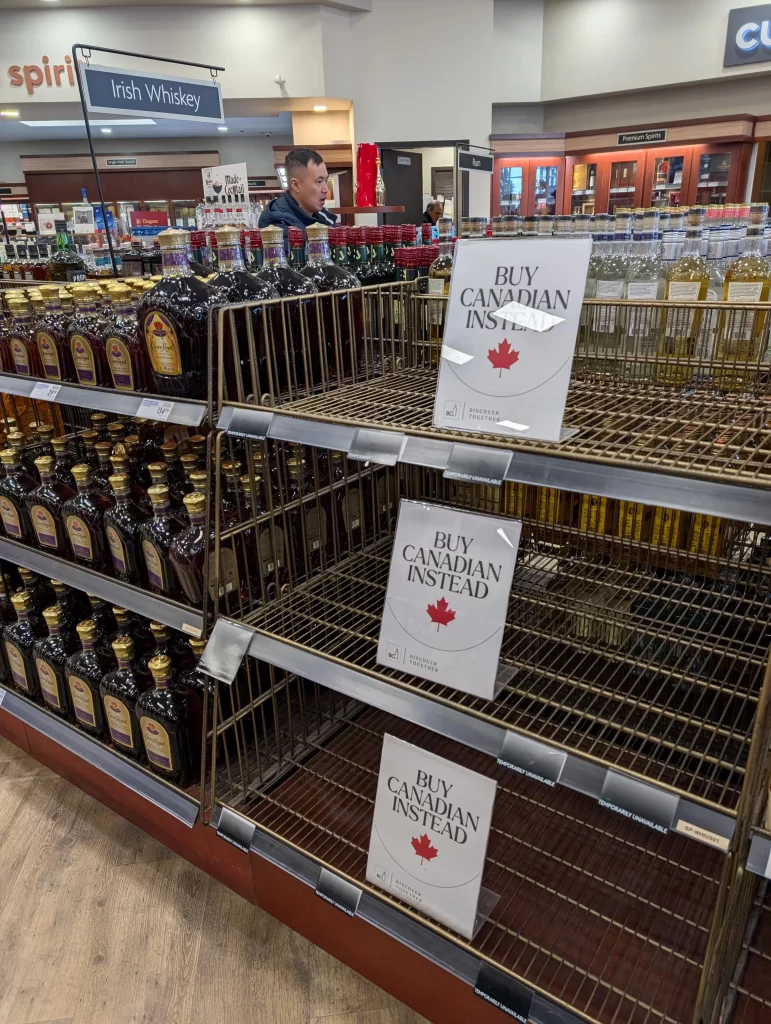Sigh. Where do we even start to unpack this? It’s taken me three weeks to get my head around it all and write this post. Hope it helps you to make sense of the situation. U.S. President Donald Trump enacted 25% tariffs on Canadian goods imports, including a 25% levy on steel and aluminum. These measures seem to be part of a broader protectionist agenda aimed at reducing the U.S. trade deficit. While the move wasn’t entirely unexpected—given his long-standing threats and pouting at Canada, China, and Mexico—many of us assumed negotiations would prevent such steep measures. But you know what they say about ASSUME! [Remember? Assuming makes an ASS out of U and ME? – more sighing.] Now, however, economic disruptions seem inevitable, and Canada has responded in kind with its own countermeasures and has implemented retaliatory tariffs on U.S. goods. So, we’re in a tit-for-tat escalation trade war that has completely obliterated the longstanding trade relationship between Canada and the U.S.
It also hasn’t helped that Trump’s controversial and ongoing remarks suggesting that Canada will become the 51st state, exacerbating diplomatic tensions and generally just pissing off Canadians. But, we Canadians are rallying together and standing strong. There are things we can do though lesson the impact of all this nonsense on our day to day life.
Here’s my take on what this means for Canada’s economy and political landscape.
Our loonie is weak: The Canadian dollar, already struggling, dropped further to C$1 = US$0.68, making imports more expensive and reducing Canadians’ purchasing power. I’ve even heard pundits saying it could go even lower.
Price hikes for consumers: Higher tariffs mean increased costs for importers, which will eventually be passed on to us, the consumers, leading to inflation concerns. With the loonie still dropping, imports from the U.S. will become more expensive. This means higher prices on groceries, electronics, clothing, and other everyday goods.
Potential job losses: Businesses struggling with increased costs may cut jobs or slow hiring, making employment more uncertain, especially in trade-dependent sectors. Industries like automotive, agriculture, and steel manufacturing face rising costs and declining exports, leading to potential job losses and economic slowdown.
More expensive fuel: The cost of gas and heating could rise as energy markets react to new tariffs and supply chain disruptions.
Debt pressures increase: With inflation rising, wages may not keep pace, making it harder for Canadians to manage household budgets and pay off debt.
Canada’s economy: While Canada’s economy is deeply reliant on trade, the U.S. also stands to suffer. Tariffs on Canadian goods will drive up costs for American businesses and consumers. Experts that I’ve been listening to predict the U.S. GDP could shrink by 1.6% if the trade war continues, with households potentially paying an additional $830 annually for goods. Canadian GDP could contract by 2-4% over the next couple of years because of declines in exports and investment, as well as rising inflation and unemployment rates. However, I’m surmising that the ultimate impact depends on whether political and economic pressures force President Trump to reconsider.

GHY.com
What the heck can we Canadians do?
- Strengthen our Money and Financial Situation:
Revisit your budget! Check your spending and put every spare penny you can into that emergency fund. Check in with yourself on wants vs needs and really consider if you can’t live without the item. Would you still love that new pair of boots as much if you lost your job next week?
Build an emergency fund if you haven’t already got one. Ideally, 3-6 months of income to cover your needs and give you a buffer.
Reduce your debt if you have any. Stop using the line of credit or credit card and get laser-focused on paying it off. Rates will likely go up and that means you will be paying more interest on your debt.
Diversify your investments. Don’t rely just on stocks or sectors that are heavily affected by trade tensions (e.g. manufacturing, consumer, or resource-based industries). Instead, hold a good mix of technology, healthcare, and even international market indexes.
- Enhance our Career and Employment Stability:
Consider upskilling or reskilling so you can transition into more resilient sectors. Look at alternative jobs and look to see what in-demand skills are needed that you don’t yet have.
Expand your job networks. Work on your professional relationships and stay informed about job opportunities. LinkedIn and Indeed have loads of resources to help folks navigate layoffs.
- Change our Spending Habits:
Choosing Canadian-made products can help sustain local industries and employment and reduces our reliance on imports.
Wait 48 hours and decide if you really need that item. Curtailing our spending could be the single best thing you can change TODAY!
My Final Thoughts While these tariffs introduce significant economic and political challenges, Canada has weathered trade disputes before. The last trade dispute was in 2018-2019, oh wait, Trump was in office then too, so this should be no surprise to our politicians. He used threats of more tariffs to force Canada and Mexico to renegotiate the U.S.-Mexico-Canada Agreement.
I’m hoping that we continue to see the current situation lead to increased national support for domestic trade and policy changes aimed at strengthening our interprovincial commerce. A friend mentioned today how impactful it is to see the BC Liquor Store with empty U.S. shelves and signs reminding her to buy Canadian. Nice work BCLIQUOR!
As negotiations continue, staying informed and prepared will be key. Please don’t stick your head in the sand as the elections roll around. We all have a part to play in keeping our country strong and our own personal finances in order to mitigate what might be around the corner. Check out the free resources on my website to help you get organized. Good luck my friends!

Photo credit VonPursey on Reddit
Leave a Reply